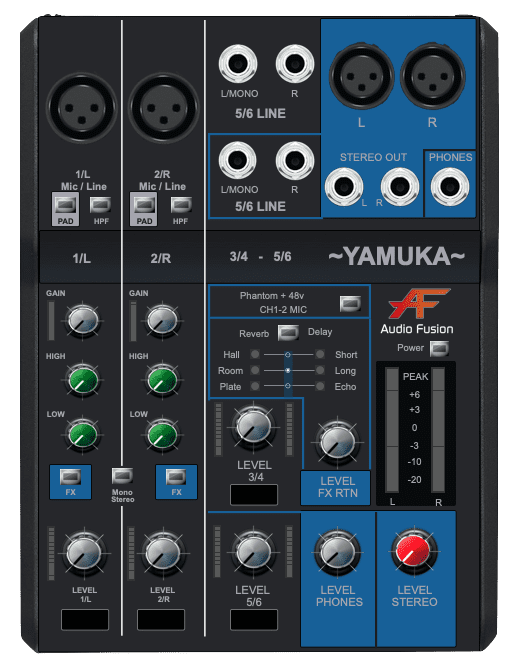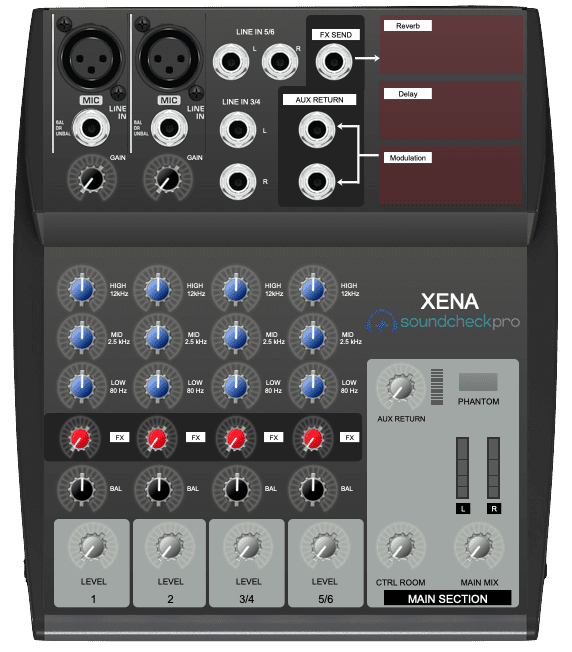Compact Mixer Overview
Introduction
Ultra-compact mixers are a type of audio mixer that are designed to be portable and easy to use, while still providing powerful mixing capabilities. These mixers are commonly used by musicians, podcasters, and broadcasters who need a portable mixing solution that can be used in a variety of different environments. In this article, we’ll describe the parameters commonly found on an ultra-compact mixer and explain how they can be used to achieve the desired sound.

Common Features
Despite their small size, ultra-compact audio mixers can offer a range of features that are comparable to larger mixers. Some of the most common features include:
- Multiple channels – Allowing you to connect multiple audio sources. This is essential for mixing live performances, recording sessions, or other events.
- Input & Output Connectors– Can come with a range of types, including XLR, 1/4-inch, and RCA connectors. Mixers typically have a stereo output for connecting to speakers, headphones or recording equipment.
- EQ controls – Adjust the frequency response of each input channel. This is especially useful for live performances, where you may need to tweak the sound to compensate for the acoustics or mix.
- Effects Sends – Some compact audio mixers come with built-in effects, such as reverb, delay, and chorus. This can be useful for adding depth and dimension to your audio and can save you the hassle of carrying around additional effects pedals or equipment.
- USB connectivity – Many compact audio mixers come with USB connectivity, allowing you to connect them to a computer or other digital device for recording, streaming, or playback.
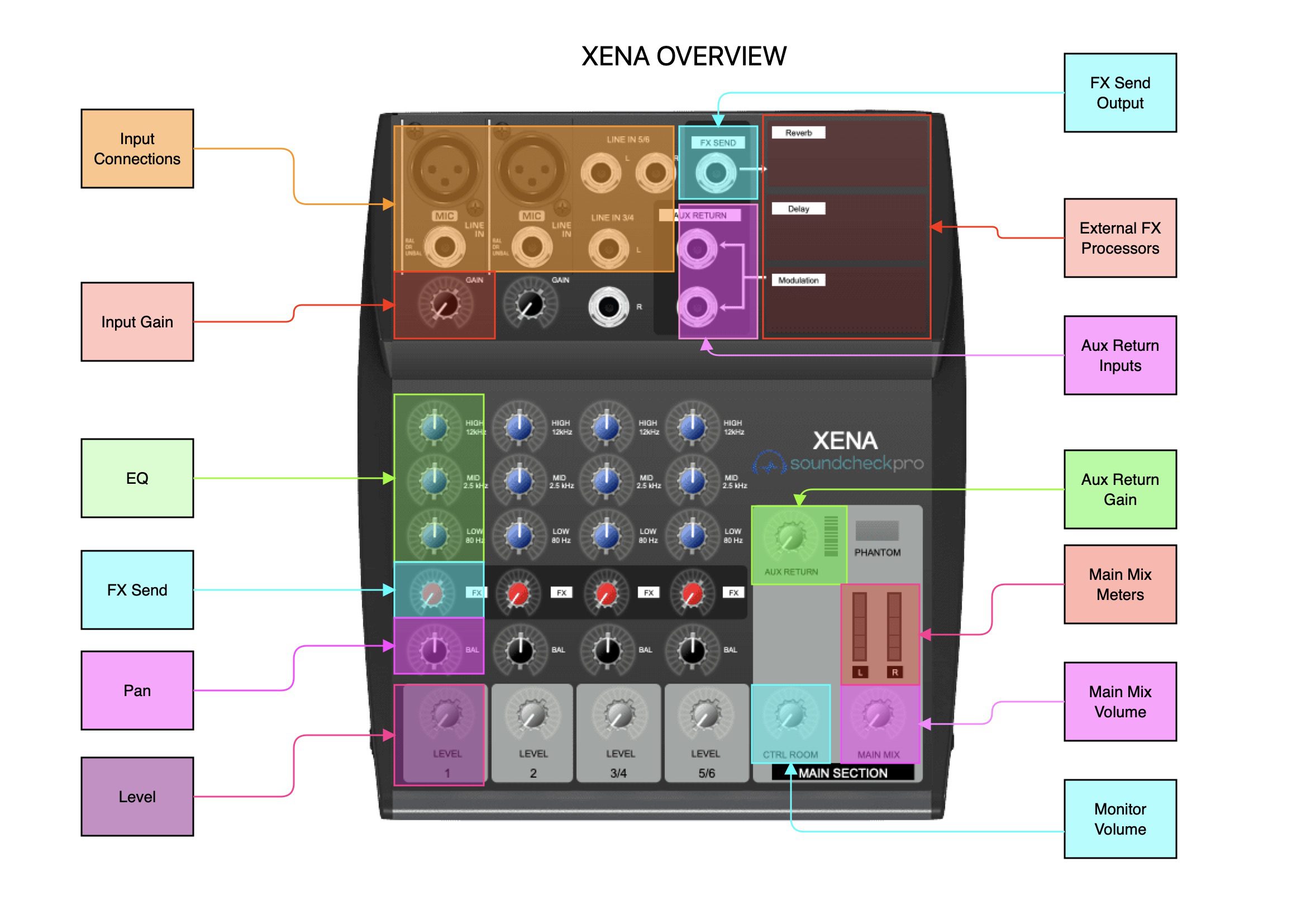
Input Channels
The number of input channels on an ultra-compact mixer will vary depending on the model, but most models will have at least two input channels. These channels allow you to connect different audio sources, such as microphones, instruments, or line-level devices like CD players or smartphones.

Input Gain
The input gain controls on an ultra-compact mixer are used to adjust the level of the audio signal coming from each input channel. This is important for achieving a balanced mix, as different sources may have different output levels.
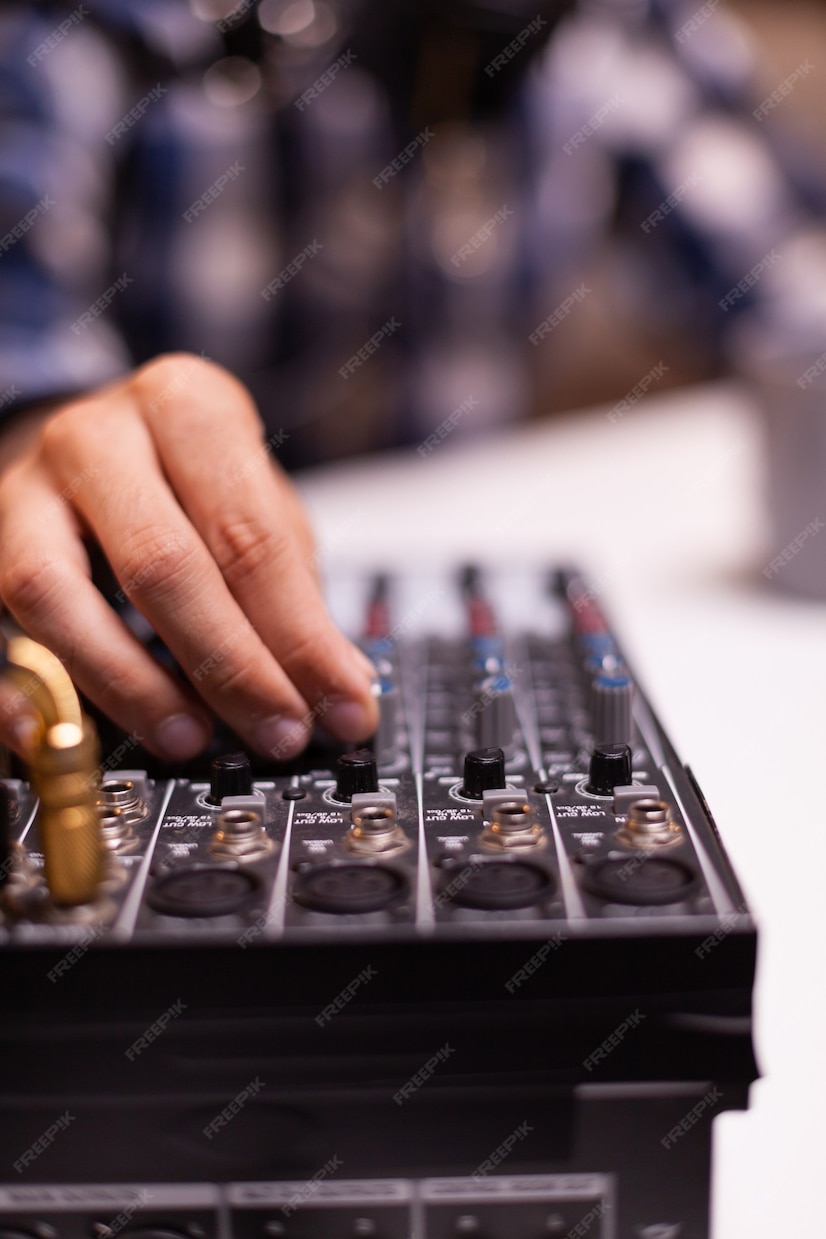
EQ
Most ultra-compact mixers will have some form of EQ control for each input channel, which allows you to adjust the tonal balance of the audio. This can be used to cut or boost certain frequencies, and can be used to make adjustments based on the acoustics of the environment or the needs of the audio source.
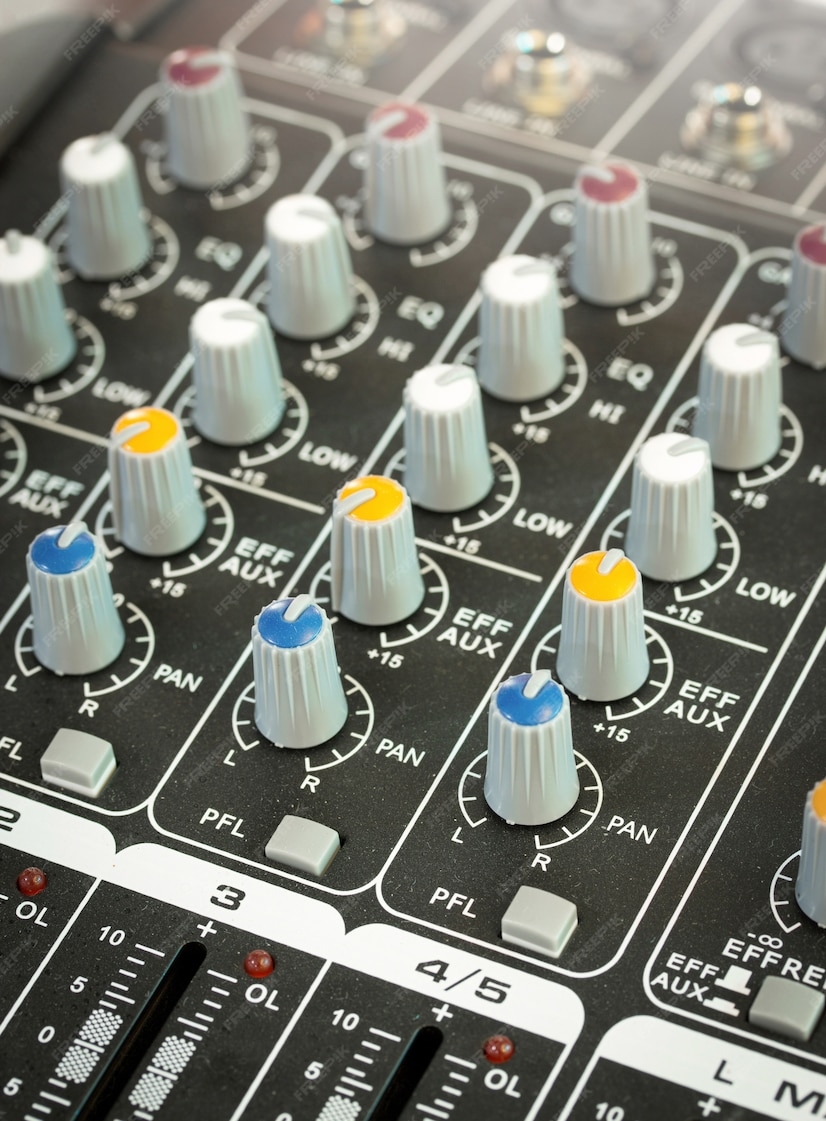
Aux Send
Aux send controls are used to send audio from each input channel to an external effects processor, such as a reverb or delay unit. This allows you to add effects to individual audio sources, which can be especially useful for creating a more natural or polished sound in a live performance or recording setting.
Pan
The pan control on an ultra-compact mixer allows you to adjust the stereo placement of each audio source. This is important for creating a balanced mix, as it allows you to place different sources in the stereo field and ensure that they are not overlapping or competing with each other.
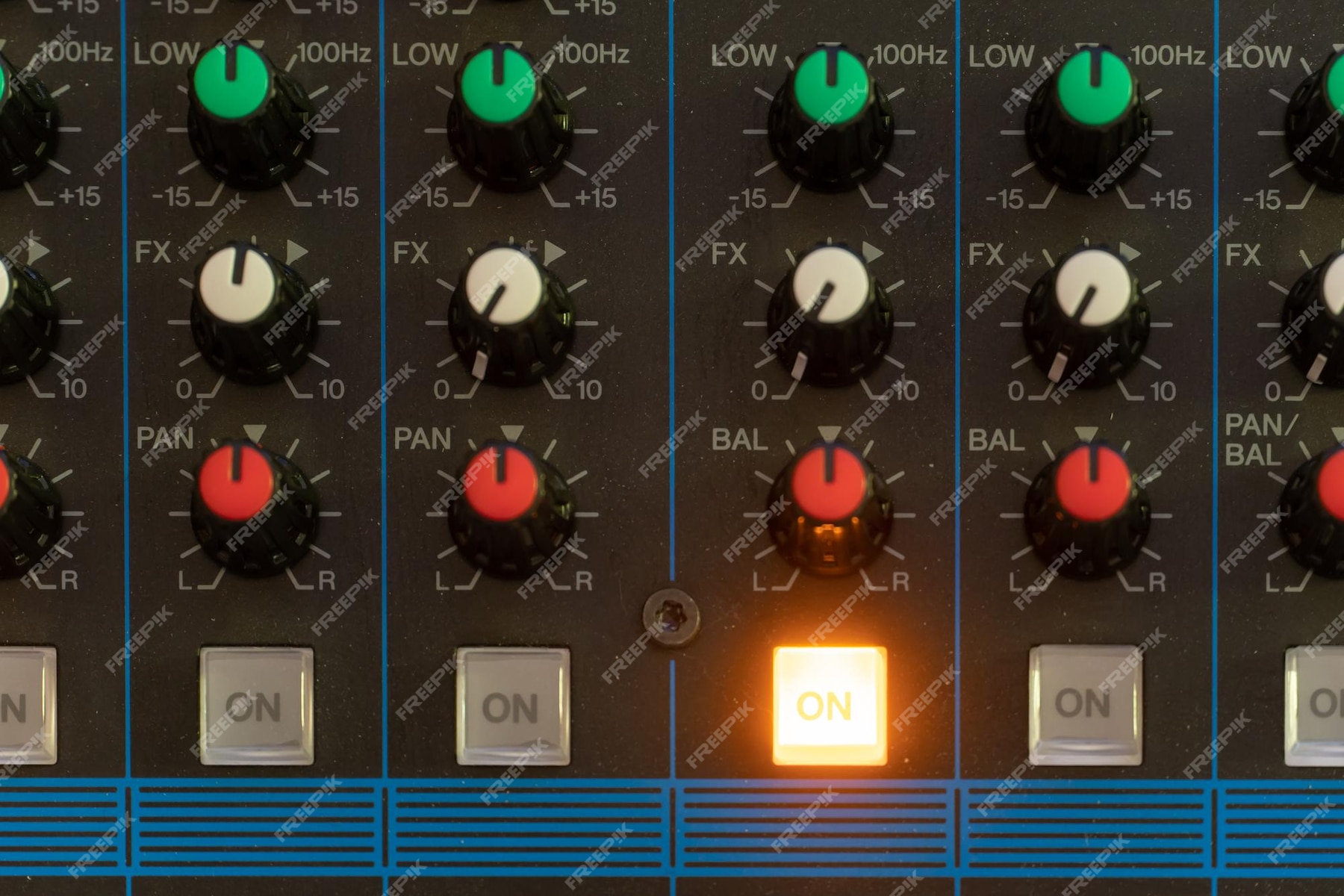
Solo and Mute
Mute and solo switches are important features found on audio mixers. The purpose of the mute switch is to silence a specific audio channel, allowing the sound engineer to remove unwanted audio sources from the mix. This can be particularly useful during a live performance or recording session when the sound engineer needs to quickly mute a channel to prevent feedback or other audio issues. In contrast, the solo switch allows the sound engineer to isolate a specific audio channel and listen to it in isolation, without hearing any other channels in the mix. This can be useful when fine-tuning the individual levels and EQ settings for a particular audio source or instrument.
Channel Fader
The purpose of channel faders is to control the volume level of individual audio channels. By adjusting the fader for each channel, the sound engineer can balance the levels of all the audio sources to create a cohesive and well-mixed sound. This ensures that the overall sound is clear, balanced, and free from distortion or other unwanted artifacts. The channel output volume is controlled by either a fader or knob.

Level Meter
Most ultra-compact mixers will have a level meter or LED indicators that show the level of the audio signal for each input channel. This is important for ensuring that you are not overloading the mixer and causing distortion or other problems.

Output Controls
Ultra-compact mixers will typically have a range of output controls, such as level controls for the main output, headphone outputs, and auxiliary outputs. These controls allow you to adjust the level of the audio signal going to different destinations, such as a recording device or a set of speakers.
- Master Volume
- Monitor Output Volume (headphones)
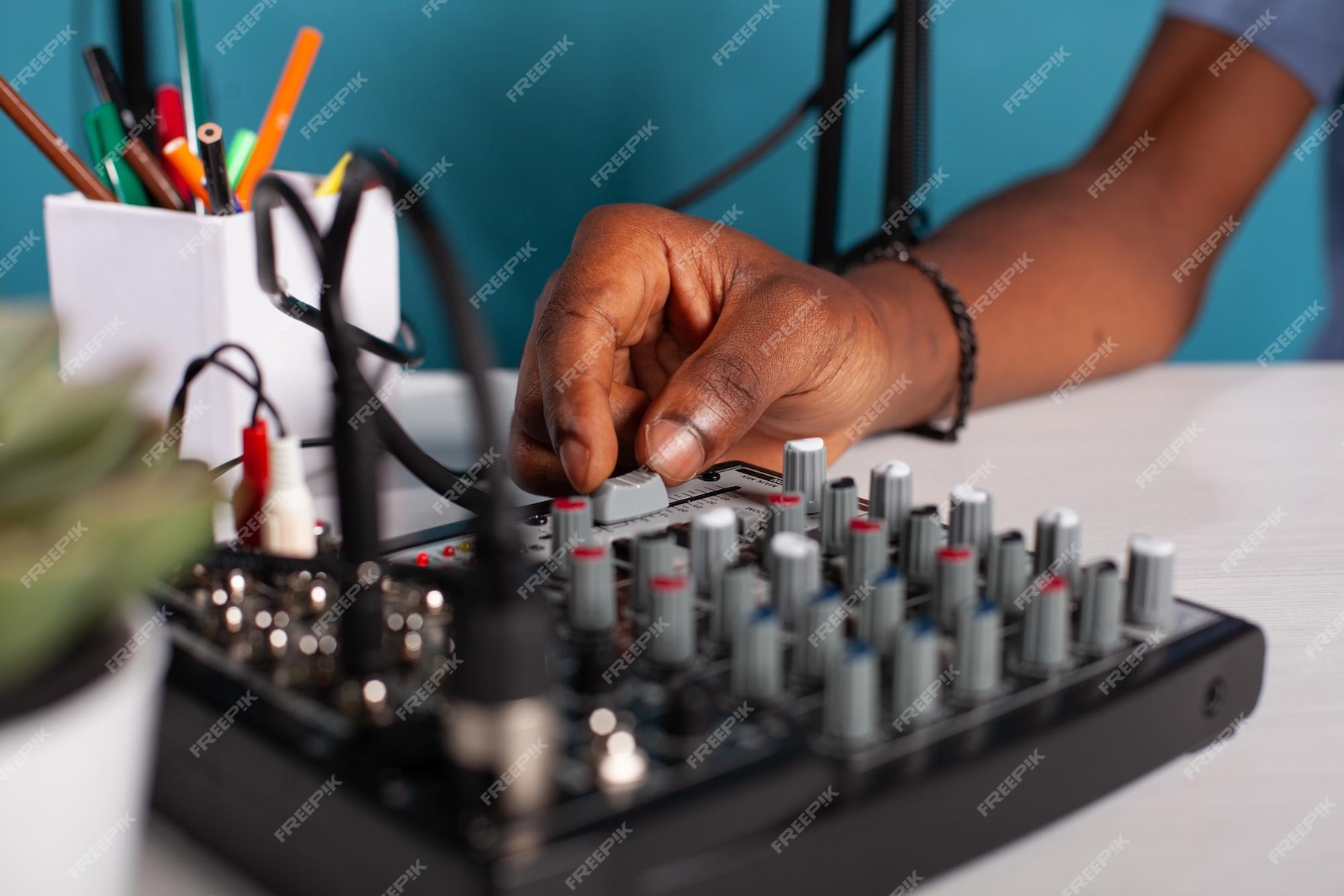
Aux/FX Sends & Returns
The Aux/FX sends duplicate a signal towards a designated output for fx sends. These outputs could be used for headphone mix or for routing to audio effects. When there are multiple sends present, they could each be utilized for their own purpose. Ultra-compact mixers will typically offer at least 1 send. Many mixers offer on-board effects processing
- Channel FX Send
- Effects Processors

Connector Types
The input connections on channels may be different in order to support as many connector types that are found on microphones or playback devices. Channels maybe take mono or stereo inputs.

- XLR Connectors
XLR connectors are commonly used for microphone inputs on an ultra-compact mixer. XLR connectors offer a balanced signal which helps reduce noise and interference. They also provide phantom power, which is necessary for powering condenser microphones.
- TRS Connectors
TRS connectors, also known as tip-ring-sleeve connectors, are used for line-level inputs on an ultra-compact mixer. These inputs are commonly used for connecting instruments, CD players, and smartphones. TRS connectors come in both 1/4″ and 1/8″ sizes, and can be used interchangeably in some ultra-compact mixers.
- RCA Connectors
RCA connectors are also used for line-level inputs, typically for connecting consumer-level devices such as CD players, DVD players, or gaming consoles. However, RCA connectors may not be as durable as TRS connectors, and may not offer the same level of signal quality.
- Combo Connectors
Some ultra-compact mixers come with combo connectors that can be used as both XLR and TRS inputs. This can be useful for musicians who need to switch between microphone and instrument inputs quickly.


Conclusion
In summary, an ultra-compact mixer is a versatile and powerful tool for mixing audio in a portable and convenient package. With a range of input channels, EQ controls, aux sends, and other features, these mixers can be used to achieve a wide variety of sounds and styles in a range of different environments. By understanding the different parameters and how they can be used, you can get the most out of your ultra-compact mixer and achieve the best possible sound for your needs.
Try the Compact Mixers in SoundcheckPro
Interact and learn the inner workings of an ultra compact audio mixer at no cost using the BD-1 mixer in SoundcheckPro. Each component is displayed in the order of signal flow. The destinations all have meters to distinguish the attenuations of the signal.
